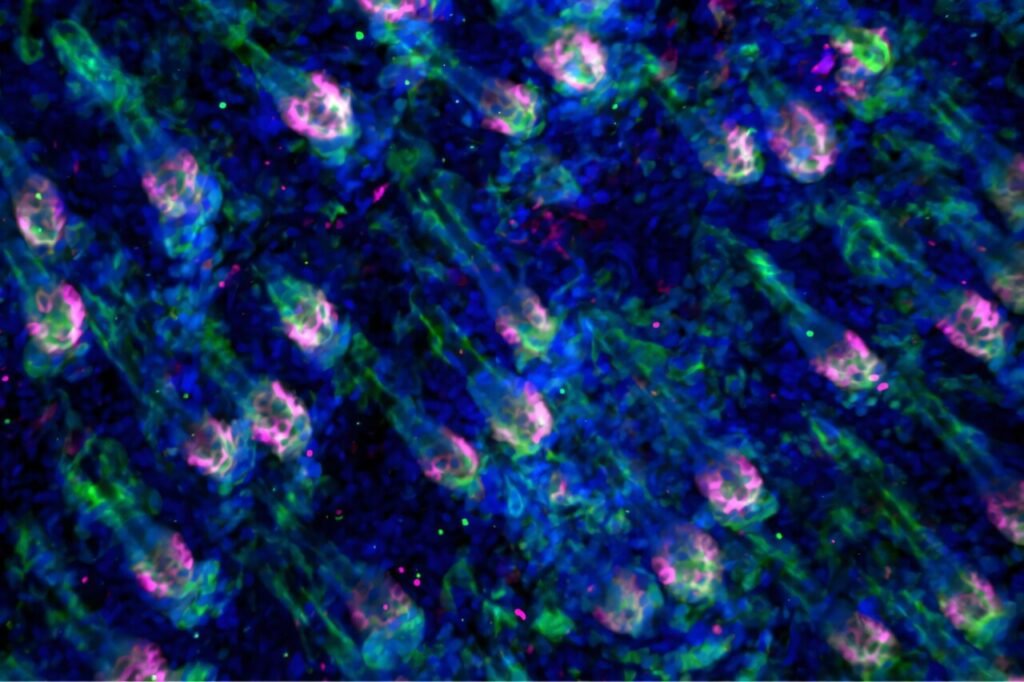The skin is a remarkable organ that houses two types of adult stem cells: epidermal and hair follicle stem cells. While their primary roles are to maintain the skin and support hair growth, recent research from Rockefeller University has revealed that hair follicle stem cells (HFSCs) are capable of switching teams to aid in skin healing when the skin is injured. But how do these cells know when to shift their focus?
The latest study from the Fuchs Lab at Rockefeller University has pinpointed a crucial signal that prompts HFSCs to transition from hair production to skin repair: an integrated stress response (ISR) that instructs the stem cells to conserve energy for essential functions. This ISR is activated in response to nutrient deficits, particularly a decrease in the non-essential amino acid serine, which is commonly found in foods like meat, grains, and milk.
When serine levels drop, the ISR is triggered, causing HFSCs to slow down hair growth. In the event of a skin injury on top of nutrient deficiencies, the ISR is further heightened, halting hair production entirely and redirecting the cells’ efforts towards skin repair. This shift in priorities accelerates the healing process, showcasing the adaptability and versatility of HFSCs in response to tissue needs.
Lead author Jesse Novak, a current MD-PhD student at Weill Cornell’s Tri-Institutional MD-PhD Program, explains that serine deprivation acts as a cellular signal that fine-tunes the fate of HFSCs, steering them towards skin repair and away from hair growth. These findings suggest that manipulating serine levels through dietary adjustments or medications could potentially enhance the speed and efficiency of wound healing.
In investigating the metabolic factors that regulate stem cell behavior during tissue repair, Novak and his team discovered that HFSCs undergo metabolic stress tests when deprived of serine, leading to a downregulation of hair growth as the cells divert their energy towards skin regeneration. The ISR also activates in response to skin injuries, further prioritizing wound repair over hair regeneration in times of tissue stress.
While the study focused on the impact of serine deficiency on stem cell fate and wound healing, the researchers also explored the potential of high-serine diets to boost hair growth. However, the body’s tight regulation of serine levels limited the efficacy of dietary interventions in promoting hair regeneration. Nevertheless, selectively targeting serine levels or ISR activity through dietary modifications or medications could hold promise for expediting wound healing and optimizing tissue regenerative capacities.
Looking ahead, the research team plans to investigate the influence of other amino acids on stem cell behavior and tissue repair processes. By unraveling the intricate interplay between metabolic factors and stem cell fate decisions, they aim to uncover novel strategies for enhancing wound healing and tissue regeneration in response to environmental stresses.
This groundbreaking research, published in Cell Metabolism, sheds light on the dynamic interplay between nutrient availability, stress response pathways, and stem cell behavior in tissue repair and regeneration. By harnessing the body’s innate mechanisms for adapting to changing conditions, researchers may unlock new avenues for accelerating wound healing and optimizing tissue repair processes in the future.


